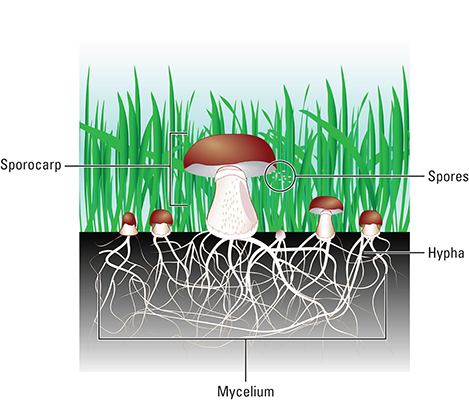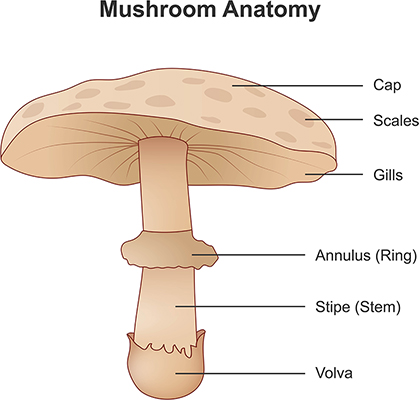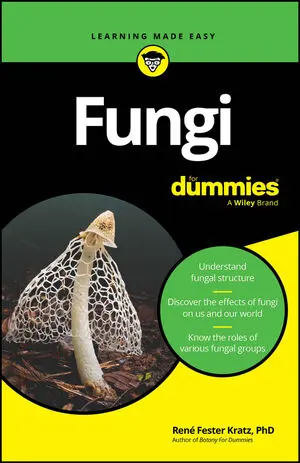Fungi may be the most mysterious and powerful organisms on the planet. Most of the time, they grow almost invisibly through the soil below your feet, decomposing plant matter. The study of fungi is known as mycology (myco=fungus, logy=study of). The following cheat sheet provides a few concepts to get you started on your journey into the world of fungi and their role in Earth’s ecosystems.
The biology of fungi

Terrestrial fungi grow as threads called hyphae (singular: hypha). As they grow, hyphae weave through the food, or substrate, of the fungus, forming a mat called a mycelium. Fungi are heterotrophs that must eat molecules made by other organisms. They are absorptive feeders, meaning they absorb small molecules from their environment into their cells. Many fungi are saprobes that digest dead organic matter such as leaves and logs, while others are parasites that feed on living organisms. These types of fungi typically release digestive enzymes into their environment to break down the large molecules of their substrate or their host, then absorb the products of digestion. Some fungi form partnerships like mycorrhizae and lichens with photosynthetic organisms. The photosynthetic partner provides sugars to the fungus, while the fungus helps acquire water and minerals.
Fungi reproduce by spores, single cells protected by a resistant wall. Fungi can make spores through sexual and asexual processes. Asexual spores may be produced on specialized hyphae called sporangiophores. Some fungi produce sexual spores in large structures called fruiting bodies, or sporocarps.
Fungi are extremely important in ecosystems because they act as decomposers, breaking down dead organisms so that nutrients can be recycled for other organisms to use. Mycorrhizal fungi support the growth of 80 to 90 percent of plants on Earth, including most plants that humans use as food crops. Lichens have the ability to grow in harsh environments where plants can’t grow, providing a valuable food source to animals in those environments.
Major groups of fungi
The development of DNA science has helped scientists better classify the different types of fungi that have been identified so far. The following groups of organisms are commonly included in the science of mycology:
Types of mycorrhizae
Soil fungi called mycorrhizae attach to plant roots and grow outward through the soil in vast networks. They provide plants with numerous advantages, increasing their access to water and minerals and possibly enabling communication between plants over their mycelial network. Almost all plants, including those we grow for food, have mycorrhizal partners that support their growth.
Mushroom identification

Mushrooms appear in a wide variety of shapes, colors, and textures. Many mushrooms have both a cap and a stipe (stem). Careful observation of the physical characteristics of these parts can help you with mushroom identification:
- Cap: Shape, size, and color of the cap. You can also press or cut the cap to see if it changes color (bruising reaction). Notice the texture of the cap, including whether it has warts or scales on it. Look under the cap to see if the spores are located on gills or teeth, or within pores. If you see gills, measure the spacing between the gills.
- Stipe: Shape, size, and color of the stipe. Again, you can press or cut the stipe to see if it changes color in response to bruising. Check to see if the stipe is solid or hollow. Notice the texture of the stipe and check for remnants of a veil in the form of a ring (annulus) around the stipe or a cup-shaped remnant at the base of the stipe (volva).





